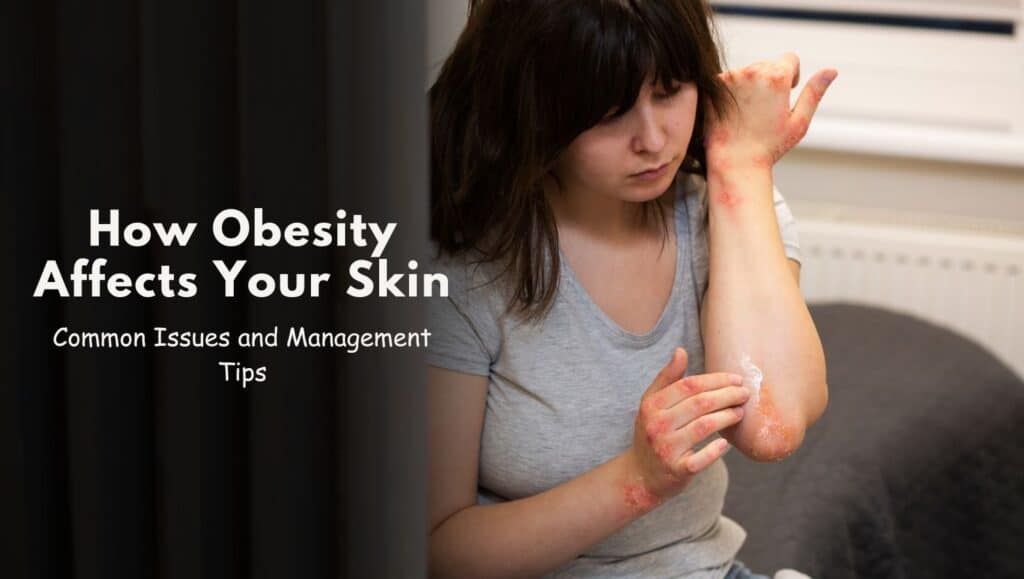
Table of Contents
Our skin reflects our overall health, and the foods we consume play a significant role in determining how it looks and feels. Understanding the connection between diet and skin can help to make smarter choices for a radiant, glowing complexion. Daily diet has a big impact on our skin. Eating too much sugar and processed foods can cause inflammation, acne, and early signs of aging.
Being overweight can lead to skin problems due to various factors. Hormonal changes may cause dark, velvety patches on the neck and body folds, while stretched skin can result in stretch marks. Extra pressure on leg veins can lead to fluid buildup, leg swelling, broken capillaries, varicose veins, rashes, and even ulcers. Moisture in body folds encourages bacteria and fungi, causing infections. Increased weight on the feet can also lead to corns and calluses.
How does being obesity lead to skin problems?
Obesity leads to several skin problems due to changes in the skin, such as:
- A weaker skin barrier that causes increased water loss.
- Increased oil production by skin glands, leading to acne, pimples, and rashes caused by inflammation from excess body fat.
- Thicker fat layers under the skin, resulting in larger skin folds and excessive sweating.
- Blocked lymph fluid flow under the skin, which may cause swelling due to fluid buildup.
- Reduced collagen production, slowing wound healing and making it harder to manage skin-related conditions effectively.
Skin manifestations associated with obesity
Acanthosis nigricans
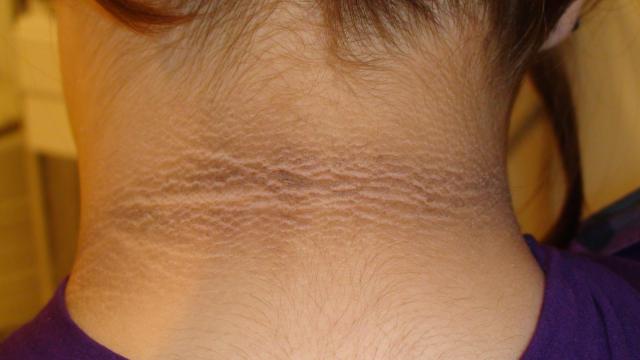
It is a common skin pigmentation disorder characterized by dark, thick, velvety patches that often appear on skin folds, such as the armpits, neck, groin, elbows, and other areas. It is frequently associated with obesity, as excess body fat can lead to insulin resistance, a key factor in the development of this condition. The disorder is also linked to underlying medical issues like prediabetes or diabetes, and may cause itching or odour.
The primary symptom of acanthosis nigricans is the appearance of dark, thick, velvety patches of skin, which are typically found in areas where skin folds or creases occur. In addition to the visible skin changes, affected areas may also be itchy or have an unpleasant odour. The patches often develop gradually and can vary in size. The skin may feel thicker or have a more textured appearance compared to surrounding skin.
Treating the root cause, such as managing obesity or diabetes, is the most effective way to address the condition, as the patches often disappear once the underlying issue is resolved. Cosmetic treatments like skin lighteners, oral acne medications, and laser therapy can improve the appearance of the affected skin but do not cure the condition.
Striae distensae/ Stretch marks
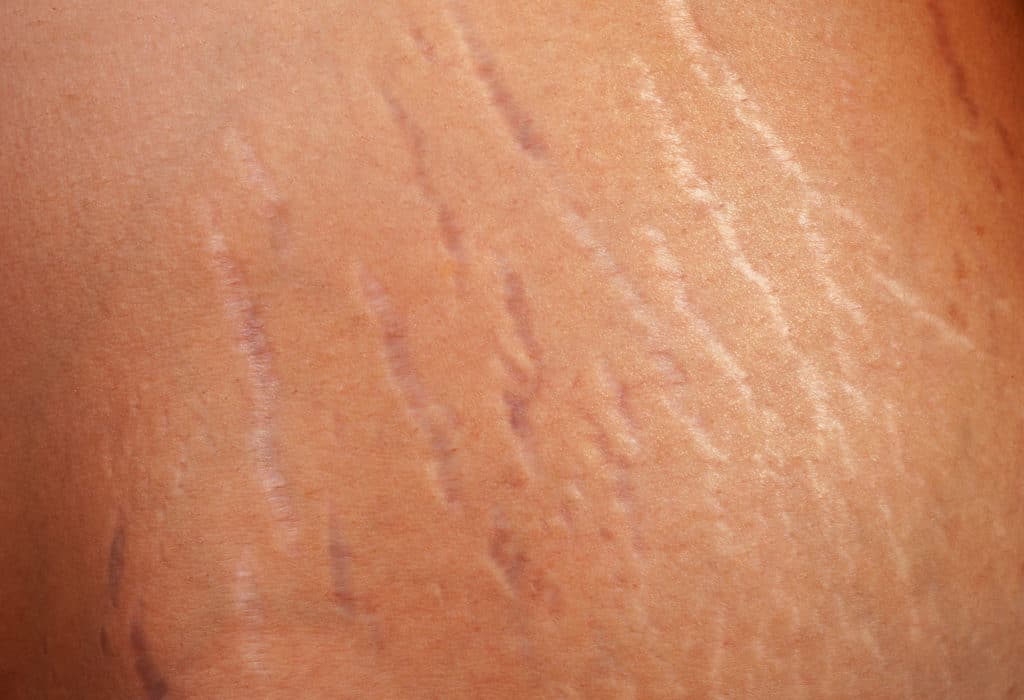
Stretch marks, also known as striae distensae, are thin, scar-like marks that appear when the skin is stretched due to weight gain. They are commonly found on areas like the breasts, abdomen, thighs, and buttocks in people with obesity. Initially, they appear as flat, red or purple lines that run across the natural lines of tension on the skin. Over time, these marks fade to a white or silvery colour and become sunken with a wrinkled texture.
Skin tags
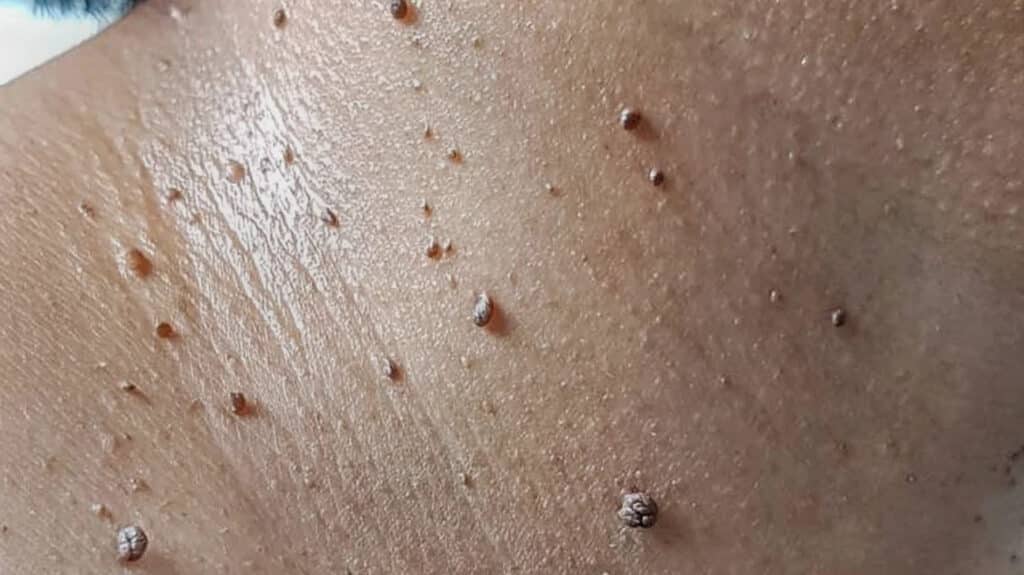
Skin tags, or acrochordons, are often linked to high insulin levels and skin friction. They commonly appear in areas such as the armpits, neck, groin, and other skin folds as small, soft, skin-coloured, or brown bumps that hang off the skin.
Hirsutism
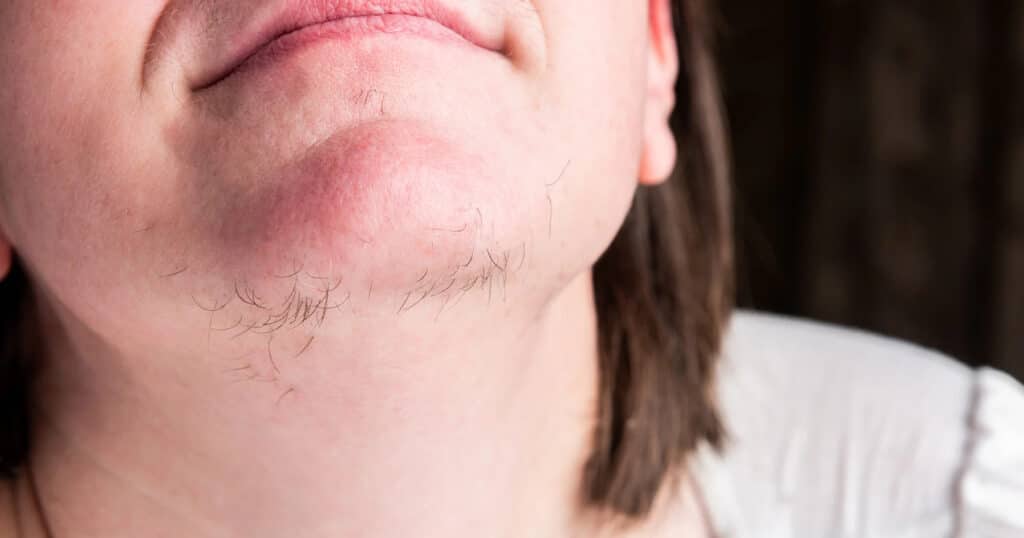
Hirsutism refers to the growth of excessive hair in a male-pattern distribution, such as a beard, in females. This condition is often inherited and can be aggravated by hyperandrogenism, which is an increased level of male hormones, commonly associated with fatty tissues. The severity of abnormal facial hair growth tends to correlate with an increase in body mass index (BMI). In individuals with obesity, the excess body fat contributes to higher levels of androgens, further promoting the development of hirsutism. Effective management of this condition typically involves addressing the underlying hormonal imbalance and, in some cases, weight management.
Dercum disease
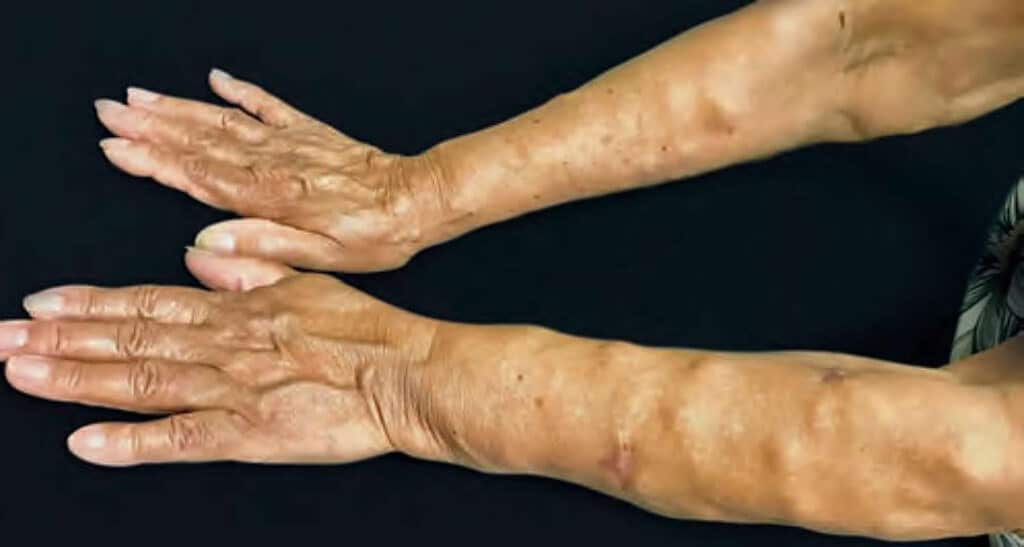
Dercum disease usually affects obese, postmenopausal women and is marked by multiple painful lumps of fat (lipomas) and bruising without clear injury. People with Dercum disease tend to weigh 50% or more above their ideal weight, and the pain increases as BMI rises.
CONCLUSION
In conclusion, obesity can have a significant impact on skin health, with various conditions and skin manifestations linked to excess body weight. From increased oil production leading to acne and rashes to the development of dark patches like acanthosis nigricans and stretch marks, the effects of obesity on the skin are multifaceted. Other skin issues, such as skin tags, hirsutism, and Dercum disease, are also more common in individuals with obesity, often exacerbated by hormonal imbalances and excess body fat. Managing weight and addressing the root causes of these conditions, including hormonal regulation, can help improve skin health. Maintaining a healthy diet, staying hydrated, and seeking medical treatment for underlying conditions are essential steps in promoting a healthier complexion and overall well-being.


